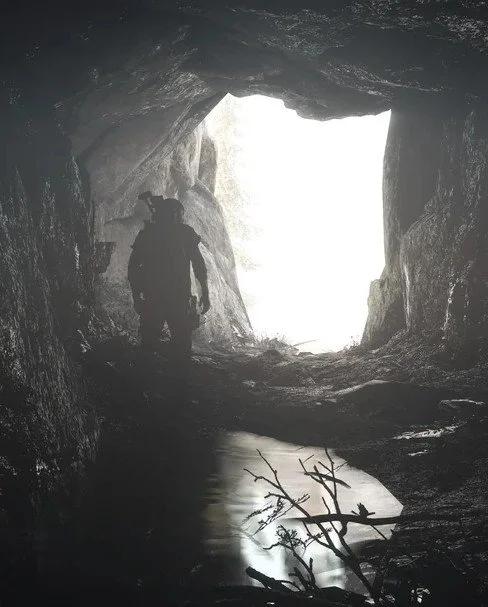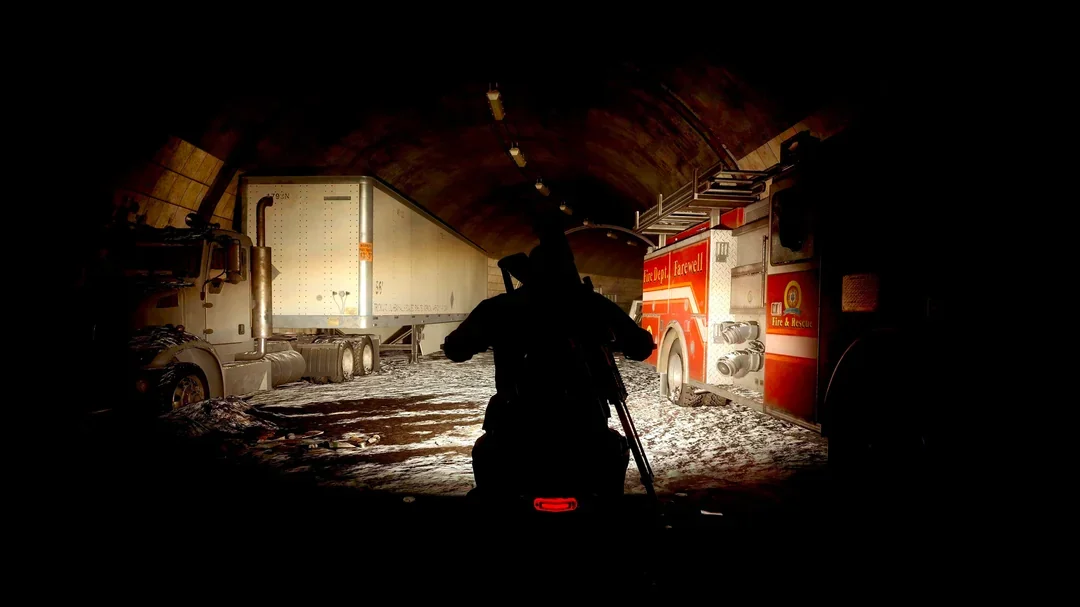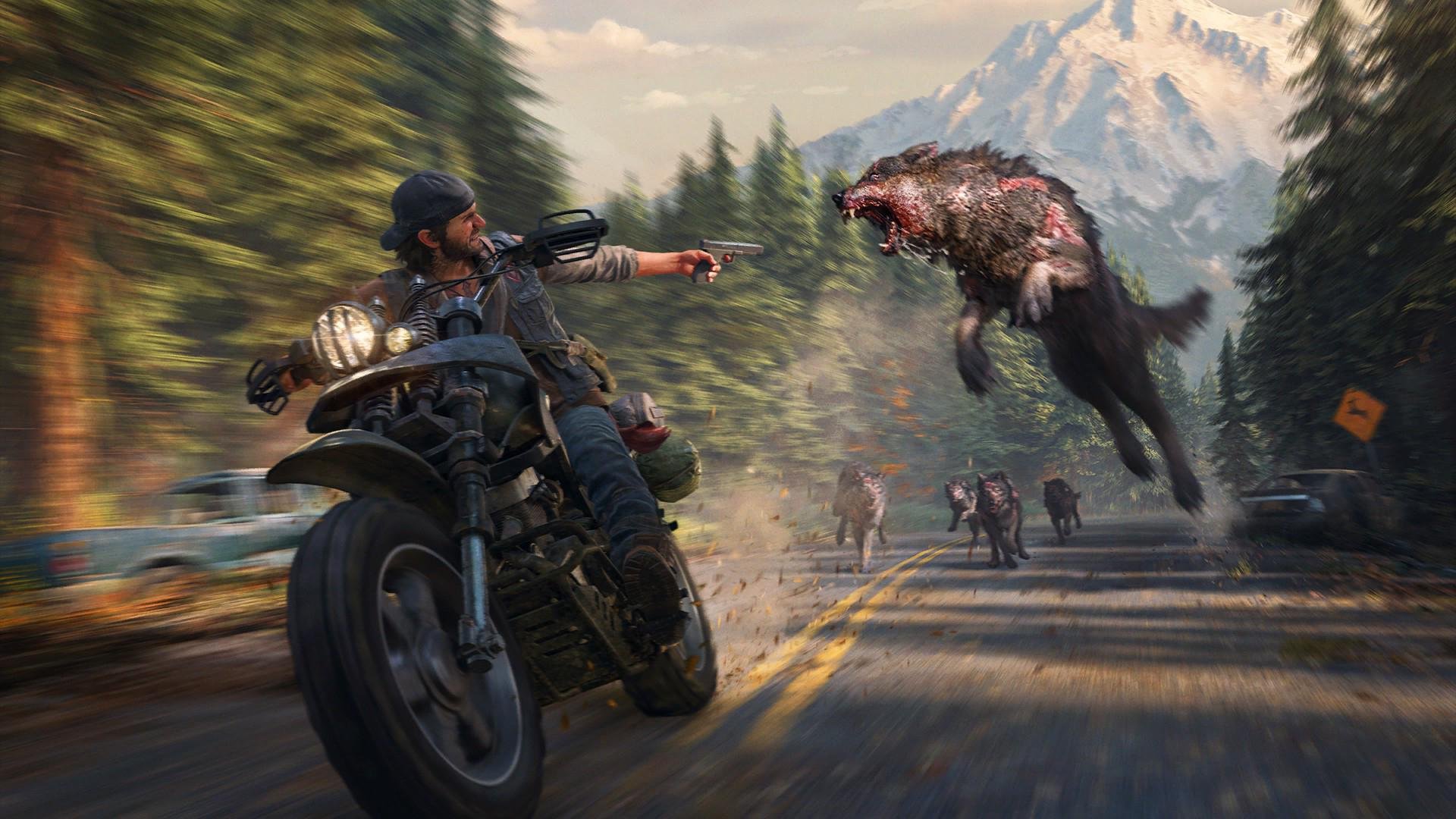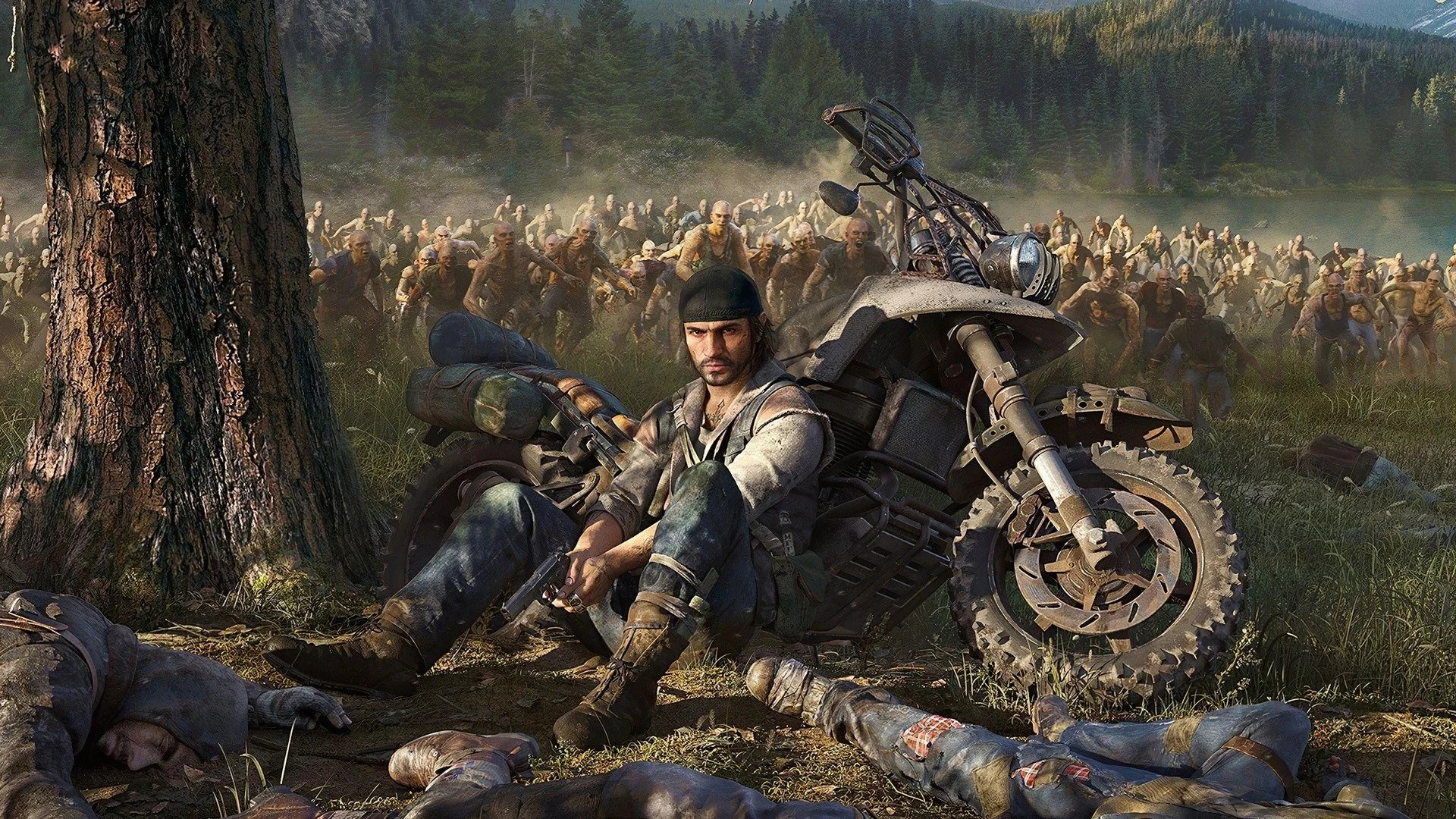
Is Days Gone One Of The Most Underrated Games Of All Time?
Bend Studio’s post-apocalyptic open-world romp was released with a lot of fanfare but was met with indifference. Since through word-of-mouth it has garnered a cult following.
Days Gone puts you in the motorbike boots of Deacon St. John deep in the Oregon wilderness, some two years after a pandemic that saw much of the world’s population succumb to a virus that transforms them into highly aggressive zombie-like creatures known as ‘freakers’. These aren’t the slow, shambling monsters of George A. Romero films or The Walking Dead, they are quick like of the zombies from 28 Days Later and the game’s tone is blend of those, with a sprinkling of Resident Evil, liberally seasoned with The Sons of Anarchy.
Because Deacon and his partner in crime Boozer are bikers who eschew the fortified camps of survivors that society has devolved into and instead live as drifters ‘out in the shit’, negotiating the dangers of the wild, surviving through their wits, nail-studded baseball bats, pump-action shotguns and their trusty motorbikes. Dreaming of a better life in the north, they work as mercenaries trading the ears of the freakers they kill for resources from other survivors in camps. That relative peace is shattered when Boozer is injured and Deacon learns from a shadowy government organisation that his missing wife is still alive. With him and his bike you negotiate the Oregon badlands in a desperate search to find her.
A Diffcult Birth….
Days Gone was intended to be a big hit on the scale of The Last of Us. Like that legendary game it is a Sony exclusive, a flagship title for the behemoth gaming corporation and was released with significant fanfare in late 2019. By that point it was already a year overdue after being in development by Bend for over five years.
At the start of the process Bend thought its 50 existing staff would be sufficient to bring the game to fruition, but that proved too amibitious and the workforce ballooned out to over 130 to complete it. Even with that extra person-power on release the game was far from the finished article, bedevilled by bugs and glitches.
After being heavily trailered in the run up it was hotly anticipated and unit sales were initially brisk, but the hype train quickly left the tracks as news of the state of the game spread. Days Gone is not the first game to have this issue; famously big names like Cyberpunk 2077 and Fallout 76 suffered in a very similar way. But Fallout was a well established series, and Cyberpunk was developed by CD Projekt Red of Witcher 3 fame, so arrived with a lot of good will from the gaming community.
Days Gone in contrast was a brand new I.P. and came from a studio whose last big hit was Syphon Filter in 1999, and in the intervening time had been mainly devoted to developing spinoffs for handheld consoles. Sales quickly dipped, and the game failed to hit its expected targets.
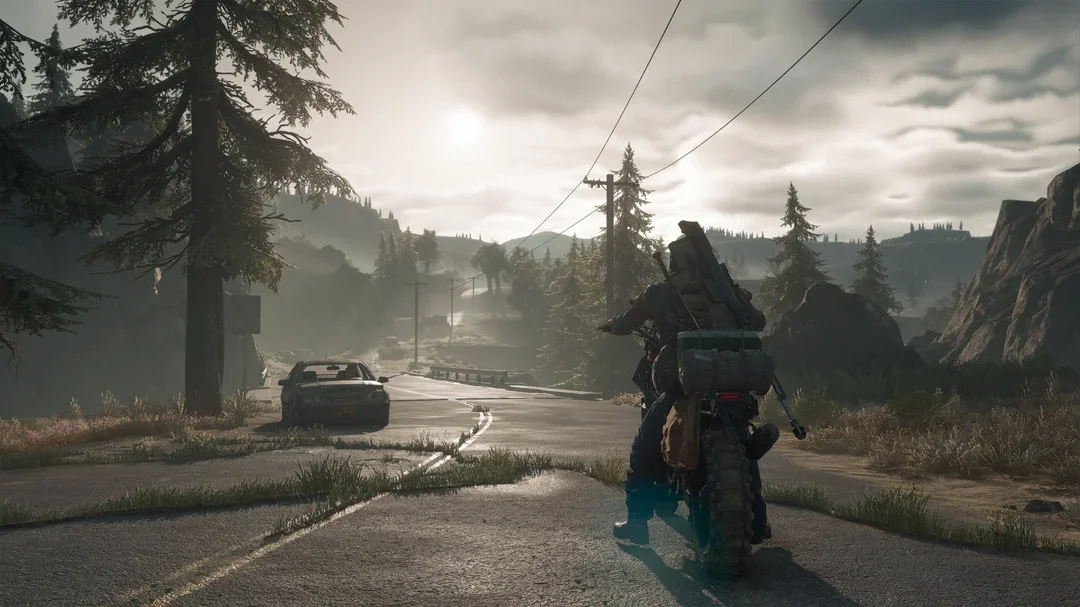
Games these days are a signifcant expense, and gamers are understandly circumspect with how they spend their money. To shift the sort of numbers Sony expected you need a real buzz emerging around the game to persuade them to part with their cash, something with its buggy launch Days Gone spectacularly failed to generate. Its flaws made the game feel unfinished and rushed, which to be fair it was, hurried to meet the tight deadlines demanded and making a for a stilted, frustrating experience to play.
But gamers are also realists: bugs will be ironed out by rapid post-release patches, and can be countered with a well-written, compelling story, interesting gameplay and enthusiastic reviews. But instead Days Gone got a distinctly lukewarm critical reception compounding those launch issues. The general consensus was the game lacked engaging characters and narrative, and the gameplay repetitive in an uninspiring setting.
The question always remains is how long do critics spend actually playing the game before judging it. You usually expect 10-20 hours of gameplay from a traditional linear game’s main campaign. In such a game by 2-3 hours of play you should have had a thorough introduction to the protagonists, antagonists, gameplay and gone deep into the storyline with several levels completed and typically with a boss fight or two under your belt. Open—world games offer a very different experience and Days Gone is no exception: the first 3 hours are spent barely keeping Deacon alive exploring a very hostile environment, just about arriving at the first camp and getting your bike back, and making a few faltering steps into the wilderness.
This became very apparent when I tried to play the game a second time immediately after my first playthrough, before the studio had added a NG+. After sinking a minimum of 60-70 hours in the game it should have been straight-forward but instead, stripped of my weapons, bike, strength and stamina it was incredibly hard-going. I was a total babe-in-the-woods, going from being able to wipe out hundreds of freakers in minutes to being easily overwhelmed by 3 of them. It was an eye-opener, a sharp reminder of just how difficult and slow the early game is.
You do not get a true appreciation of the game until you go significantly deeper into it, at around its mid-point when you when you arrive into the third camp, Lost Lake. By then the story has taken shape and the pace picks up, as well as getting the bike upgrades, weapons and skills for Deacon to be able to take on much larger numbers of freakers. It makes it easy to parse why impatient critics were quick to be negative towards the game. This is not a defence of the it: there is a fundamental structural inbalance with a slow, difficult first third. If anything by the final third the opposite is true with an over-powered Deacon able to chew through massed enemies with a nonchalant ease. It is that middle third where the game achieves a brilliant equilibrium and beautifully hits its stride.
Days Gone also arrived with a monkey on its back. Naughty Dog’s cinematic masterpiece The Last Of Us had come out some 5 years earlier but Days Gone was still caught in the long shadow it cast. Inevitable comparisons were drawn with both games set in a zombie-infested, post-apocalytic American distopia, and both being Sony exclusives. Tribal lines got drawn on social media and in sub-reddits as debates raged over this new interloper’s qualities compaed to TLOU.
It was and remains an unfair comparison. Two rough and ready bikers clad in leather and denim were never going to achieve the sheer charisma Joel and Ellie brought to the screen, let alone the narrative scope and emotional impact that the earlier game delivers in spades. There are similarities: in both the protagonist loses someone they love, but that frantic and harrowing action of TLOU’s opening sequence arguably ranks as the greatest in all of gaming. The game cleverly introduces you to Sarah before it does Joel, and the gut-wrenching pain that both Joel and you the gamer share as she bleeds out in his arms sets the tone brilliantly for the rest of the game. It is an emotional pact that you forge with Joel, sharing both his grief and subsequent fierce protection and desperate love for his surrogate daughter Ellie.
Days Gone cannot match it, but then no other game has come close. You are briefly introduced to Deacon’s wife (also called Sarah) in the game’s prologue where you put her on a helicopter expecting it to fly to safety. It is later that you find out that the camp she was heading for was overrun, but this is an old-fashioned bait-and-switch and you soon find out she is likely to have survived. But your subsequent search for her never achieves the same urgency and emotional weight you feel keeping Ellie alive.
In 2019 it was also released into a political landscape that had shifted dramatically since 2013. The first camp you deal with is led by Copeland, a libertarian, conspiracy theorist nutjob, once on the lunatic fringe now depressingly mainstream. The next camp, Tucker’s, resembles a totalarian gulag, with desperate survivors forced into a form of slavery, working at gunpoint and beaten in front of you. A later camp is christofascist with a paranoid, authoritarian cult leader. It is a blighted, desolate hellscape with little to redeem it, even without the actual monsters that haunt it; a vision of a discordant, white rural Americana that would be hard to imagine were it not for the Trump presidency so violently fomenting existing fault lines.
As such the game becomes an uncomfortable mirror held up to the real time fracturing of society we are watching as we drown in divisive culture wars seeded by foreign propaganda. In a distinct twist of irony Deacon’s ruined Oregon resembles the despairing wastelands and social demise that demogogic rhetoric tries to tell us is already all around us. In a similar way to The Walking Dead and The Last Of Us, the game repeatedly asks the question; who are the greater monsters: the flesh-eating freakers or your fellow human survivors?
But underneath all of this are the fundamentals of a great game. While lacking the gravitas and emotional impact of The Last Of Us the story is still compelling and after a slow start gathers pace. Deacon is ably acted by Sam Witwer and along with Boozer the game soon adds a capable bunch of supporting characters like friends Rikki and Addison, tragic rescuee Lisa, the leader of Lost Lake Iron Mike and finally Deacon’s lost wife Sarah. Add to that some truly foul antagonists in the treacherous Skizzo (fuck Skizzo), the messanic militia leader with a taste for genocide Colonel Garret and the drug-fueled psychopath Jessie/Carlos, leader of the freaker-worshipping death-cult ‘Rippers’, and you have a great recipe for a post-apocalyptic romp.
Then there is the shadowy presence of the remnants of N.E.R.O. or National Emergency Response Organisation, the game’s version of F.E.M.A. Obviously retaining significant levels of organisation and resources, your first exprience of them are black helicopters spotted in the distance. When you eventually catch up to one of them you met O’Brien, the agent that evacuated Sarah in the prologue. Through him Deacon finds out she is still alive and the two of you form a reluctant alliance, with him helping you find Sarah and Deacon helping him with his research into the evolving freaker virus.
Ah yes, the freaker virus, I had almost forgotten about that. In shades of 28 Days Later and Resident Evil, the doomsday virus was developed as a bio-weapon and stolen and inadvertedly released by an environmental group. Infecting humans at a tremendous rate it transforms them into feral, cannibalistic monsters with heightened physiology that has overun a good proportion of the United States and possibly beyond, although Deacon operating in the wilds of Oregon knows little of the wider picture.
Although resembling zombies freakers are actually alive: they eat, sleep and defecate, and also instinctively come together in large groups and form a sort of gestalt, animalistic hive-mind. Humans are not the only creature the virus can affect: you also encounter infected crows, bears and wolves, the latter being the one thing that can threaten Deacon when on his bike. The virus is also mutating and evolving (sounds familiar) and as the game progresses you slowly encounter more versions: the adolescent and mostly harmless newts, the huge, grotesquely musculed breakers, who before the outbreak were steroid abusers, and the shambing screamers whose shout will stun Deacon and summon a crowd of freakers down on you. Finally there are the reachers, who you first encounter in a cave system investigating the disappearance of four N.E.R.O. investigaters. They are frankly terrifying, with an eerie, guttural call and a fast, unpredictable attack pattern hinting at greater intelligence.
Another great strength of the game is the world it takes place in. Bend Studios is based in Oregon and they set the game in the wilderness that lay at their front door. All around you as you gun your motorbike along is the ruin of the human world contrasting with the majesty of the natural one. Roads are strewn with the debris of a fleeing population, littered with bodies, rusted cars and ruined trucks. Fallen trees and makeshift barricades block your passage, grass grows through the cracks in the tarmac, towns are desolate and silent. Moments of genuine claustrophia come as you attempt to negotiate the choked road tunnels where ambush, both human and freaker, threatens at any time. More gruesome are the mass burial sites, bloody pits of twisted bodies wrapped in tarpaulin watched over by long silent digging machines
Framing the detritus of the old world are the mountains and woods of the Pacific North-west, with its tall peaks and dense conifer forests. The sky is cloudy, the sun low and its shadows long, the air is choked with smoke and mist. It rains a lot. The palate is deliberately subdued, full of washed-out shades of brown and greens. It is simultaneously bleak but beautiful, imbued with a sense of despair and isolation as you movce through it, just you and your motorbike.
That bike is a wonder. In it Bend have made something truly remarkable: an astonishing simulcrum of a vehicle that just flows through the rich environment intuitively. Without hyperbole I would go so far to say it is a best transport of any open-world game I have yet played. Which is particularly impressive given that primarily this is a zombie fighting game not a driving. The attention to detail is a tribute to its developers and their obvious real-world passion for motorbikes.
Although it does not start out that way. Your original bike is stolen after being damaged in the prologue, and when you catch up to the camp where it is already fenced and stripped for parts, and its replacement is initially a clunky affair; slow and with terrible fuel consumption. But it is both your lifeblood and constant companion and as such you need to take care of it. Traversing the map needs planning; when fuel is running low you have to feather the throttle and use the geography to your advantage, killing the engine and coasting down slopes. You pick your routes, taking you through settlements where there are petrol stations, or checkpoints where there are fuel cans. The road itself offers scavenging opportunities: like ambulances give you medical supplies and police cruisers ammunition, towtrucks always come with a can of fuel. But no locations are without risk: marauders ambush you at the fuel pumps while freakers and breakers lurk at the checkpoints. Scouting and planning ahead brings benefits: caution is your friend.
And early on you will run out of fuel and when you do there is no option left but to push that motorbike along, which can make for some hair-raising moments as you try to creep past a horde of freakers or a camp of rival survivors. It is not without its frustrations and it does bring complaints from players; it certainly did from the critics. But it’s also a refreshing dose of realism from the developer, in stark contrast to others where a whistle will see your mount appear nearby, or a swift call to your mechanic will deliver your new ride. The bike stays where you leave it which forces you to think about where you do: you may need it to beat a rapid retreat, or have it handy to restock ammunition and supplies, and you do not want it out in the open where it will attract attention from marauders. There will be times you get cut off from it and be forced into a life-or-death race to circle back to it. It is a triumphant, cathartic moment when you do, leap on, gun the engine and race away from the danger.
Its existential importance to Deacon cannot be overstated, so it is a relief that after some fairly light grinding in the grand scheme of things you are able to upgrade it and late in the game it becomes a true thing of joy. It is unique looking, custom built by Deacon to cope with the challenges of a post-apocalyptic world, and as you steadily rebuild it throughout the game you are able to customise it further. By the end the bike feels like a game in itself, it is so polished and glorious to ride. There is more than one reddit post where players of the game have felt so inspired by it they have gone out and bought a real one for themselves. The only other game I have played that have had bikes close to being as good is GTA Online, and in particular the Manchez Scout, but that comes with some pretty hokey, arcade-like physics. Deacon’s bike just feels perfect. The only other transport from a similar game that I would say delivers the same level of fun would be the Waterwing from Horizon: Forbidden West, and that a flying robot dinosaur.
I have saved the best thing until last. Yes there is something better in the game than the bike: its hordes. These are larger groups of freakers, many numbering in the hundreds that will attack and pursue Deacon and anything else in their path ferociously. Despite being such a defining mechanic the game introduces you to them slowly, and with good reason because at first you do not stand a chance against them head-on. It is not until around the mid-point of the game when you reach Lost Lake you are explicitly introduced to them, when the leader Iron Mike takes you to observe one.
You can and probably will come across them accidentally earlier in the game, especially if you are prone to explore a lot. During the day they hibernate in caves, buildings and in one case abandoned train carriages and only emerge at night to feed. You can be just a few hundreds meters away from one and be blissfully unaware of it; in fact one of the very first checkpoints you get to in the game there is a small one in a hollow just below you.
Your first encounter with one is always memorable. Mine was while I was trying to steathily sneak up on a couple of free-roam freakers at night and heard something behind me. Turning I saw hundreds of them heading in my direction. They had not seen me yet fortunately but I promptly jumped out of my skin and hightailed it back to my bike as fast as I could.
But the game cleverly does not force you into direct conflict with one of them until you should be reasonably able to take them on, but even when you are be prepared for a hard, disorientating fight. It is an exercise in using the environment to your advantage and staying on the move, and taking any chance you have to thin them out. They run as fast as you and while you have a sprint ability it does not last forever so you are always on the look out for other ways to slow them down and get some distance on them. Once you do you can use a bullet-time ability for a short time, which is both beautifully cinematic and thoroughly satisfying as you empty your machine gun in slow motion into the on-rushing horde. Once the clip runs dry or the horde gets too close you roll and run again.
There will be chokepoints where you can slow them down and gun them down more effectively, as well as piles of logs you can unleash to crush them as you run past. Shooting barrels of petrol and fuel trucks after you are past will blow up and burn your pursuers. You also have some effective ordnance: pipe bombs, molotov cocktails and napalm bombs which can be used in conjuction with ‘attractors’, radios rigged to make a load of noise you can throw to divert the horde from you and then chunk in some napalm after it. It is immensely satisfying and offers the players complex combat and multiple strategies that can be tailored it to their own style, as well as fresh approaches in replays of the game.
There are a few safe spots when running from a horde, like water and radio towers. But while the freakers cannot climb ladders they will climb onto everything else: roofs and the top of trucks offer no more than a delay to a fraut, panic-inducing affair of constant running, shooting and scanning your surroundings. Its apex comes with the Old Sawmill horde, a 500-strong relentless behemoth of a horde, the biggest in the game. You fight them across gantries and roofs, over milling machines, through warehouses and tunnels and across dams; it is a fight that can last an hour and at the end you are lucky to have a bullet and a medicine pack left. I will happily call it one of gaming’s greatest boss-fights. In another a memorable encounter in a mine, you free a chap called Mitch and suddenly its raining freakers on you from above and you are running in a blind panic through claustrophic tunnels with your flashlight the only source of light. There are around 40 of these hordes dotted around the map but only 3 who must fight to progress the story and clearing them is a fun way to spend your time post-game (the game’s D.L.C. turns this into a mini-game).
There is one last thing about the game that I think is special and quite unique in my experience, setting it apart from other open-world game: unpredictability. And what I am talking about is the meat and potatoes of an open-world game, the everyday events as you move through the world from A to B and not the showpiece events of the storyline. In general you know what is coming after playing a game for a decent amount of time. Consider Horizon: Forbidden West, a more recent game than Days Gone: once you have explored the map you know where things will spawn: Fireclaws, Thunderjaws, Sunwings, Stalkers, there are few surprises. The game will even conveniently mark them on the map for you, so when you move to that area you know what you are going to fight or avoid if you need to. It a very similar story for the Witcher 3, Star Wars: Survivor and the Assassin’s Creed trio of Origins, Odyssey and Valhalla, to name a few that come to mind. I know the exact spot a cow will lumber ito the road in GTA Online every time you pass it.
It does not work like that in Days Gone. There are parallels: the hordes stay in one space, or at least they do during the day, less so at night when they are out and feeding, but they remain in the same general vicinity. Freaker nests, newt communities, ambush camps; they are all mostly static. But the similarity ends there, because in Days Gone you get unpredictable, random events all over the map as you explore your way through it. More over those events stack, and they do so in a magnificent way.
The best way to illustrate this is through anecdotes. Imagine Deacon on his bike heading out of Lost Lake and you come across a rager (a large very angry infected bear). Deacon is on his bike so he makes the very logical choice of staying on it and shooting at the rager while staying away from its not-so-loving embrace. Then imagine as you are doing that you see the red laser of a sniper that promptly shoots your motorbike from under you. Suddenly you are and on foot in a fierce threeway fight with the rager and the ambushers that accompany the sniper. You take care of them with more than a little effort and return to your ruined bike. You are short of scraps needed to repair it fully so can only manage to get it limping along. You set off again and turn a corner to ride into a tripwire across the road: almost immediately after the first ambush is a second one, and you are down on ammo and health after the first. To your right is a town so you run towards it to get you some space between you and your attackers, before turning to face them and gunning them down. You open up on them, the gunfire echoes loudly around that the empty buildings of that abandoned town. Except they are not empty: you hear a noise behind you, and as you turn you see a large horde bearing down on you in their hundreds. You have no choice but to run, your bike a wreck, two groups of enemies trying to kill you, and things are looking bleak. Fortunately you know there is a settlement near by protected by a mounted 25. cal machine gun so you head towards it with the horde hot on your heels. You make it, just, as the machine gun opens up on the horde.
And that happens in the game’s equivalent of a trip to the shops. It is a superb mechanic that means you can never relax when you are out in the wild, you are constantly watching your back. The stacking can be insane, here is a reddit thread I posted about it years ago, and I have yet to come across a game that does anything close to how random and numerous the enemies can be in the wild.
Days Gone is not without flaws but it also has incredible strengths that has turned a game once considered a flop and quite widely panned by critics into a sleeper hit and cult classic largely through word-of-mouth. It gets regularly played by Twitch and Tiktok streamers, particularly the wonderful spectacle of horde clearing, has a vibrant reddit community and plenty of clamour for a sequel.
Which unfortuntely will likely never come. Those slow sales and negative critical words meant Sony shelved plans for a sequel very early on, despite a wonderful cliffhanger postscript in the game and a late groundswell of popularity for the game. They instead re-assigned Bend to develop a live-service game in 2021 which they abruptly cancelled in 2025 presumably in the wake of the Concord disaster. So much wasted time and wasted opportunities and Days Gone sill remains the last entry in Bend’s portfolio. It is a sad reflection of the current state of the games industry where a popular game and brilliant new IP just withers on the vine despite an enduring popularity.
Have I proved that Days Gone is the most underrated game of all time? I will let you the reader decide, better yet if you have not played it then do so and decide for yourself. It is a not a narrative masterpiece like The Last Of Us and requires time and patience to get the best experience from it, but if you are a keen player of open-world games then you expect and want that sort of commitment. Personally I want more than 15 hours from a game just for it to end with my character fully leveled up with all the best late-game equipment. I want that grind, I want to spend time in a game and fully immerse myself in it, but I also appreciate that is not the same for everyone: gamers with more limited time for example. And friends. And better life choices.
Written by A James Cole with thanks to the community at r/daysgone for the wonderful screenshots
